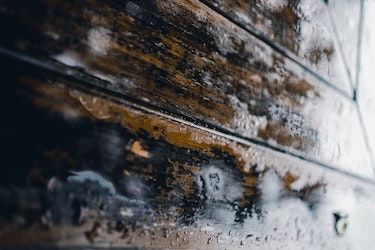Humidity is the presence of moisture in the air, and it can lead to a myriad of issues in your home. Mold and mildew growth is much more prevalent in homes with high humidity levels or improper moisture control. When the humidity levels are too high, it can cause many health concerns, including allergies, asthma, and other respiratory issues. Certain types of mold can even be fatal or cause long-term, chronic health problems. If you live in a region with high humidity, this guide will show you how to remove the humidity from your furniture, textiles, and more. This guide will also tell you how to get the moisture in your home under control so you can breathe easily.
How to identify humidity in your home
Before you can remove excess humidity, you need to recognize when levels get too high. Humidity levels can vary depending on where you live, current weather conditions, and how much ventilation you have. Ideally, the Consumer Product Safety Commission recommends a humidity level between 30 and 50 percent. Comparatively, the EPA recommends levels between 30 and 60 percent to reduce or prevent the growth of mold and mildew. If you are having trouble breathing or you’re sweating indoors even with the air conditioner on, your home humidity levels may be too high. If you’re having difficulty determining the humidity level in your home, a hydrometer can help. This device measures moisture levels in the air. You can find one easily online or at many home improvement stores to monitor the status indoors. You can also always contact a local inspector for a professional opinion.
How to remove mold and mildew from furniture
Too much humidity can cause your furniture to accumulate mold, mildew, and musty odors. Here are some tips to help you remove the mold and mildew.
Wood furniture. Wood and other hard surfaces can be cleaned much more easily than fabric. Clean your wood furniture by using a vacuum with a HEPA filter to eliminate any mold sitting on the surface, and always wear goggles, gloves, and a mask to avoid touching it or breathing it in. Wipe down the wood using a mixture of ¼ cup of bleach and one gallon of water with a non-abrasive scrubbing sponge or tool. Let the wood dry, then place it outdoors in the sun to dry completely.
Leather furniture. Removing mold from leather surfaces will release the spores into the air. Take your leather furniture outside on a dry, sunny day and wear eye protection, gloves, and a facemask. Using a stiff plastic brush, scrape off any mold or mildew that you can see. Next, wipe the furniture down using one part water and one part denatured alcohol. You can also treat the furniture with a leather-safe fungicide. Make sure everything is thoroughly dry before bringing it back indoors.
Knowing when to clean or when to dispose of furniture. There may be some situations where your furniture can’t be salvaged. Upholstery and foam can hold onto mold particles, and they’re often impossible to remove. Upholstered furniture with visible damage is not likely able to be saved. If you want to keep the furniture frame, consider having it re-cushioned and reupholstered by a furniture restoration professional. Plastic, glass, metal, wood, and leather furniture have a much better chance of being adequately cleaned and salvaged than fabric.
How to clean other surfaces, rooms, and household items
Other than your furniture, you’ll need to remove mold, mildew, and moisture from textiles and various spaces in your home.
Removing musty odors. Too much humidity and moisture can create an unpleasant musty odor in your home. Diluted bleach is a good way to remove unpleasant odors from hard surfaces. Make sure all surfaces are bleach-safe first so that it doesn’t cause discoloration or damage. Wash curtains and fabrics by soaking them in bleach for thirty minutes, then use your washing machine’s regular cycle on the hot water setting. Place them in the dryer immediately and use dryer sheets to freshen them up. A mixture of plain white vinegar and baking soda is another DIY household cleaner that can easily remove musty odors and mildew safely from materials like wood and tile.
Bathroom grout. To get rid of mold and mildew from bathroom grout, use a stiff-bristled brush and scrub it away with a mixture of distilled vinegar and baking soda. You can also use hot water, hydrogen peroxide, or Borax to get rid of stubborn mold on grout.
Household items. If mold or mildew isn’t too bad, you can remove it from mattresses with a mixture of rubbing alcohol and warm water. Vacuum the mattress, then scrub it away in a circular motion. Rinse it clean and allow the mattress to dry completely before using it. Even books can be affected by mold. To remove it, use a fine brush, soft cloth, or vacuum to wipe it away. Denatured alcohol dipped in a soft cloth can kill mildew on paperback books, but always make sure that wet books are entirely dried before removing the mold.
Walls and closets. Mold spreads quickly, so it’s likely affecting your walls and inside your closets. Mix Borax, distilled white vinegar, and water in a spray bottle for an easy DIY method that will make removing mold easy. Simply spray the walls or closet shelves with the mixture and scrub immediately with a clean cloth or soft brush.
Kitchen pantries, laundry room cabinets, and cupboards. Dark, damp areas are a magnet for mold and mildew. Remove everything from your pantry or cabinets before you begin cleaning. If you see anything that has been contaminated, it’s best to throw it away to prevent illness. Try a commercial cleaner specially formulated to kill and remove mold spores. You can also mix bleach or hydrogen peroxide with water to scrub it away. Repeat the process once more and dry it before putting food and cooking items back into the pantry or kitchen cabinets.
Hidden areas. Moisture and mold can lurk behind your furniture, in corners of the room, and under the windows. Follow one of the methods listed previously to clean these hard-to-reach areas. The key is to quickly identify areas where mold and dampness are present before it gets out of control.
DIY tips for easy fixes. If you notice mold or mildew, mixing vinegar and baking soda to make a household cleaner is a quick DIY fix. You can also remove mold by juicing a few lemons to make a DIY cleaner. Lemons break mold spores down, leaving a pleasant scent behind, especially in carpet. Let the lemon juice sit for five minutes, then gently wipe the area clean with a dry, soft cloth or stiff brush depending on the severity of the mold.
What to do to prevent it
Prevention is critical when it comes to removing humidity and getting better moisture control in your home. Here are some prevention tips to help you keep excess moisture at bay.
Vent your home properly. Make sure that your attic, basement, or crawlspace has ample ventilation. Bathrooms should also be adequately ventilated, and fans should be used whenever you bathe or shower.
Consider a dehumidifier. If humidity levels are too high, a dehumidifier can help to bring them back down. There are many types of dehumidifiers to choose from. They range from desktop models to whole-home solutions. Especially useful if you live in an area where humidity is practically uncontrollable.
Chemicals that absorb moisture. Some chemicals can absorb moisture in damp areas like a basement, kitchen, or bathroom. Silica, desiccant, clay absorbers, and calcium chloride are all excellent options. Most are safe as long as they’re stored away from pets and children.
More prevention tips. An excellent way to reduce humidity levels is to keep the air in your home moving. Install ceiling fans in the home and keep your windows open on days when outdoor humidity levels are low. Prevent condensation from building up on windows and in the bathroom to control humidity and mold growth.
DIY vs calling the experts. In most cases, you can remove mold and mildew yourself if it’s not too severe. However, if you suspect the presence of black mold or if the mold growth is too robust, it’s time to call in the experts for help.
Preventing moisture when living in humid climates. If you live in a primarily humid region, ensure that your home is well-ventilated and that your plumbing is in good condition. Leaking pipes can cause humidity levels to rise. A quality air conditioning system can keep your home cool and keep mold growth from occurring.
A few simple preventative measures can help you get the best moisture control in your home. Know how to recognize the signs of high humidity and mold growth so you can stop it before it gets out of control. With a few simple cleaning tips and some regular monitoring, including your thermostat, it’s easy to live in a home that’s safe, dry, and free from mold and mildew.
Home insurance and furniture mold coverage
High humidity in homes can lead to mold and mildew growth, causing damage to furniture. While home insurance coverage for furniture mold varies, it’s essential to understand potential inclusions and limitations to protect your belongings better.
Policy coverage for furniture mold
- Water damage events: Home insurance policies commonly cover water damage from sudden events, such as burst pipes, appliance leaks, or storms. If these incidents cause mold growth on furniture, the repair or replacement costs might be covered.
- Coverage limitations: Policies might have limitations concerning gradual issues caused by persistent humidity. The extent of coverage for furniture mold can vary based on the specific circumstances and policy provisions.
Documenting furniture damage
- Inventory and documentation: Maintain an inventory of your furniture and document any damage caused by mold or mildew. Taking photographs or videos can strengthen your insurance claim, ensuring you have evidence of the affected items.
Policy review and clarification
- Review policy details: Regularly review your insurance policy to understand its coverage concerning furniture damage due to mold. Familiarize yourself with any exclusions or limitations that may affect coverage.
- Consult with insurer: If uncertain about the coverage for furniture mold, discuss the specifics with your insurance provider. Seek clarification on what is covered and what steps are necessary for claiming the event of furniture damage due to mold.
Preventative measures
- Maintenance and care: Take proactive measures to protect furniture against mold growth by controlling indoor humidity levels, maintaining proper ventilation, and using dehumidifiers where necessary. Regularly inspect furniture for signs of mold and address any issues promptly.
Understanding how your home insurance policy addresses furniture damage caused by mold due to high humidity is crucial. While coverage might be available for sudden water-related events leading to mold growth, gradual issues due to prolonged humidity might not be covered. Being aware of the policy’s provisions, documenting the damage, and taking proactive measures to mitigate humidity-related risks for your furniture can help in navigating potential insurance claims and safeguarding your belongings. Always consult with your insurance provider for a clear understanding of coverage for furniture mold damage and take the necessary steps to protect your property.




